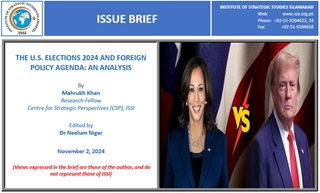As Election Day approaches, the race between the two candidates – Democratic nominee Kamala Harris and Republican nominee Donald Trump – keeps getting tighter. The campaign took a significant turn after President Biden’s withdrawal from the race and his endorsement of Vice President Kamala Harris. For many, the 2024 elections represent a critical crossroads for the U.S. – selecting its first female president or opting for a second Trump presidency.
While the people do vote directly, Presidential elections in the U.S. are uniquely decided through the Electoral College. This system allows each state in the U.S. to allocate votes based on its population. A presidential candidate must secure a minimum of 270 electoral votes from 538[1] to win the presidency. While most states have a predictable voting pattern, few battleground states or ‘swing states’ remain decisive in determining the outcome. Since August 2024, states like Georgia, Arizona, and North Carolina have seen continuous fluctuations between both presidential candidates with Trump on a slight lead, while Kamala Harris has maintained a slim lead in Nevada. Similarly, in states like Michigan, Wisconsin, and Pennsylvania the polls have remained tight with Vice President Harris on an initial lead.















